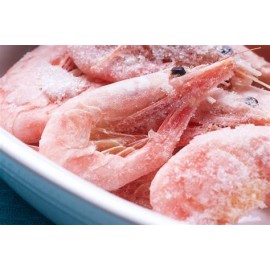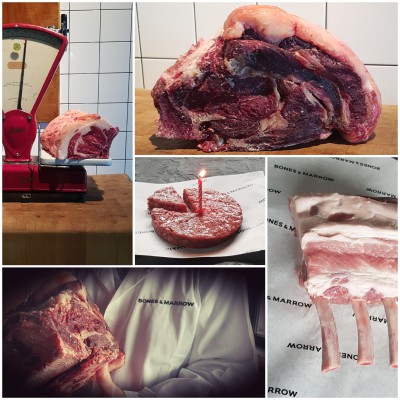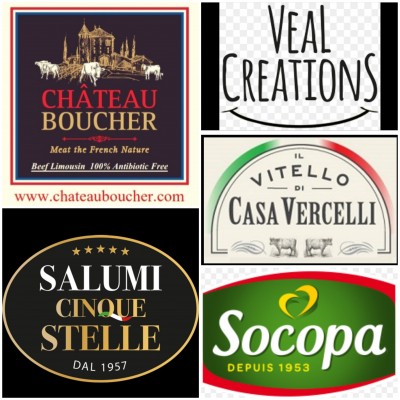Deepfrozen or fresh. Never preserved.

Enzo Sisto 24 november 2019

Frozen, deepfrozen or IQF (Instant quick freezing). We try to help you to understand what's the difference.
The president of IIAS – Istituto Italiano Alimenti Surgelati ( Italian Frozen Food Institute) mister Vittorio Gagliardi has some important things to tell us.
What is the difference between frozen and deepfrozen? And how to tell if a product has been frozen in the ideal way? Are they really more expensive and contain preservatives? To make culture on a product that is the protagonist of our diet and debunk some "fake news" IIAS - Italian Frozen Food Institute has launched a set of useful tips for consumers, to eat healthy using sub-zero products in the kitchen. So word to Vittorio Gagliardi, President of IIAS, who makes us discover some false myths related to food. For example, it is not true that frozen foods have preservatives, it is not true that they are more expensive in the family budget,
# 1 "Frozen" and "deepfrozen" are not the same thing."
The frozen foods - explains Vittorio Gagliardi, IIAS president - are foods brought to temperatures between -7 ° C and -12 ° C (which for fish and meat reach -18 ° C) and stored between -10 ° C and -30 ° C. At the time of thawing, these products are subject to a partial loss of nutritional and organoleptic values. Upfrozen products, on the other hand, undergo an ultra-rapid and efficient freezing, in which the foods reach -18 ° C in a very short time. Just the rapidity of cooling determines the formation of micro-crystals of water that do not damage the biological structure of food, leaving the nutritional properties in the product almost intact ".
#2. "At home you can't "freeze".
Instead you can freeze a previously defrosted product, but only after it has been cooked.“Deep-freezing is a purely industrial technique: at home it is only possible to freeze. However, the organoleptic and nutritional qualities of a frozen food are lower than those of deepfrozen food, which instead retains the original features, structure and taste of the fresh product. Finally, it is possible to refreeze a defrosted product as long as the food is first cooked and then quickly cooled, before being put back in the freezer. "
# 3. "There are no preservatives inside frozen foods.“
In a frozen product, by law, no preservative can be added in order to prolong its life. It is precisely the cold that guarantees the long conservation of these products. Speaking of added additives, another fake news concerns the belief that frozen vegetables would have a bright color because they are full of dyes. Instead this happens because, before freezing, the vegetables are subjected to an adequate heat treatment (blanching) necessary to deactivate the enzymes that could cause their deterioration and this is how the natural color is fixed, which is even more brilliant ”.
# 4. "Deepfrozen and fresh vegetables have the same vitamins and nutrients."
In reality frozen foods have nutritional properties that we could define as fresh and in some cases superior. Take for example a vegetable: between its harvest and the freezing process a few hours pass, this allows to maintain almost unchanged the nutritional properties. When instead we take the same vegetable to the supermarket, the time elapsed between its collection and the sale can reach even a few days away and this time frame makes it lose some nutritional properties. "
# 5. "Deepfrozen and fresh fish (or meat) have the same nutrients."
Fish is not only a natural source of macronutrients (noble proteins and omega 3 fatty acids), but also of vitamins (A and D) and mineral salts (iodine and selenium). Frozen fish products are fished in the cleanest and deepest seas in the world, far from the coasts, and immediately processed (beheaded, gutted, skinned, filleted), avoiding to the consumer burdensome home procedures that determine strong waste of this precious product.! In this product sector the reference regulations have imposed very strict rules, which also make the packaging containing the product a model of total transparency, reporting the fishing area, the time of the first freezing, the expiry, the nutritional values, the producer, and so on. "
# 6. "It is in the interest of all operators to guarantee product quality and respect the Cold Chain“
Thanks to the correct maintenance of the cold chain, the nutritional properties of deepfrozen foods are identical to those of fresh fish. The purpose of the Cold Chain is to best preserve the product, guaranteeing its integrity, hygienic standards and food safety. As for frozen foods, the maximum allowed temperature is -18 °. The chain of the cold is composed of a series of procedures, rules and techniques that serve to preserve and guarantee the maximum quality of the product, from production to transport, up to the sale, to which producers, transporters and distributors must adhere. "
# 7. "Frozen foods are a real ally against food waste and environmental friends"
Deepfrozen foods have a long shelf life that allows them to be consumed before they deteriorate. They also allow us to use only the quantity we need, putting what's left in the freezer. Finally it should be pointed out that they are products that require less water and energy for their use: it is not necessary to wash the products and it needs less energy to cook them ".
# 8. "They are no more expensive than fresh"
According to a false myth, frozen products would be more expensive than fresh ones. This is not always the case. Frozen products are collected / fished and processed in the most convenient times and in the right seasons, also from an economic point of view, and therefore are not affected by the price increase that is reflected on fresh raw materials during the year. Furthermore, with frozen food we eat 100% of what we buy, leaving companies with thorns, scales, bowels and waste of all kinds while consumers put on the table only the good part of each product, with a good saving for their "pockets.
# 9. "Frozen vegetables help children overcome the green-phobia.“
Presenting vegetables in chromatically amusing dishes and making the meal appetizing thanks to preparations with creative formats (meatballs, omelettes and morsels) is a useful suggestion for mothers dealing with children with green lobes. Frozen foods in this sense can be a precious ally in the kitchen for mothers: they allow children to eat their favorite vegetables all year round. In addition to allowing mothers to save time in the kitchen ... "
# 10. "At the restaurant, products with an asterisk (*) do not represent a fallback.“
It is common to believe that restaurateurs use frozen products for the preparation of dishes, in the absence of the necessary fresh raw materials. Also in this case, the IIAS intervenes dispelling a false myth. frozen food is used in restaurants because it is synonymous with safety and quality throughout the year, even and especially in those where a certain raw material is not in season. Therefore, the "asterisk" found in restaurant menus is simply a guarantee of high quality and absolute hygiene of the food being offered. "
source: thanks to Alessandra Favaro - Informacibo.it
Gerelateerde blogs

A new star is born: BONES & MARROW
Enzo Sisto 3 maart 2019
You will discover more about Bones & Marrow in the special edition of the magazine FOOD FIRE April 14th 2019.

HORECAVA 2020
Enzo Sisto 12 november 2019
Amsterdam RAI EXPO HORECAVA 13-16 January 2020 In Amsterdam, the 2020 appointment for professional catering and food service.

When the butcher's job comes back into fashion
Enzo Sisto 4 januari 2018
Enzo Sisto posted a copy of the article by Mathilde Samama Source: The Inrocks. A website you must follow! When the butcher's job comes back into fashion.